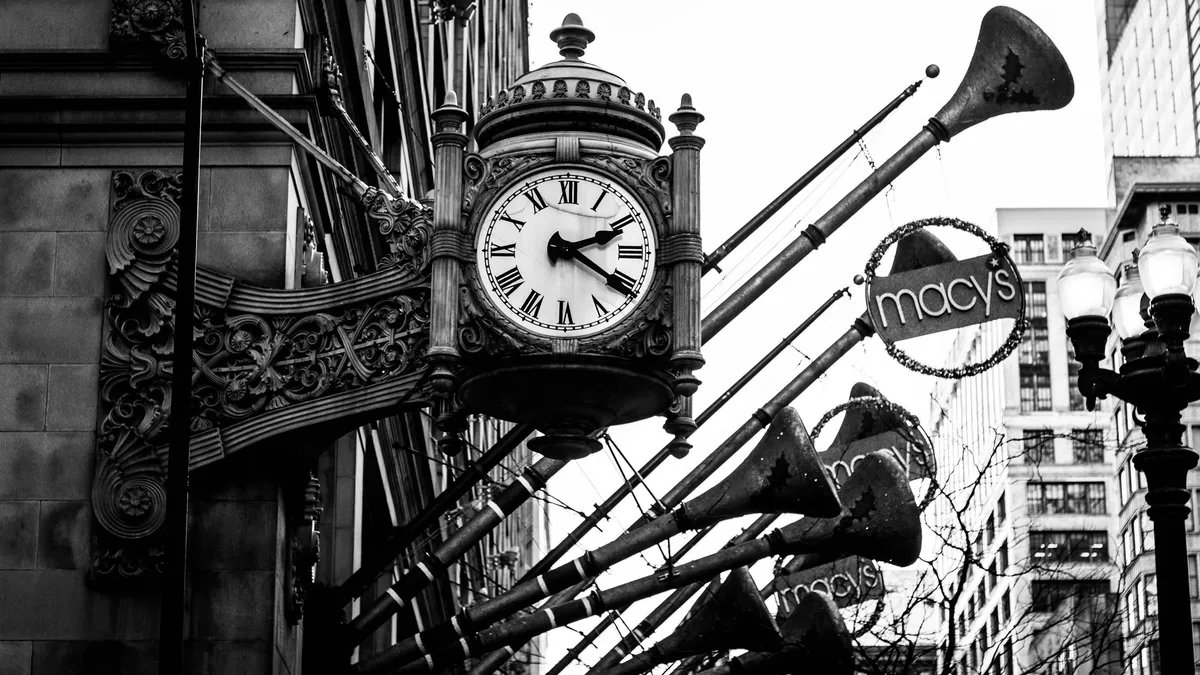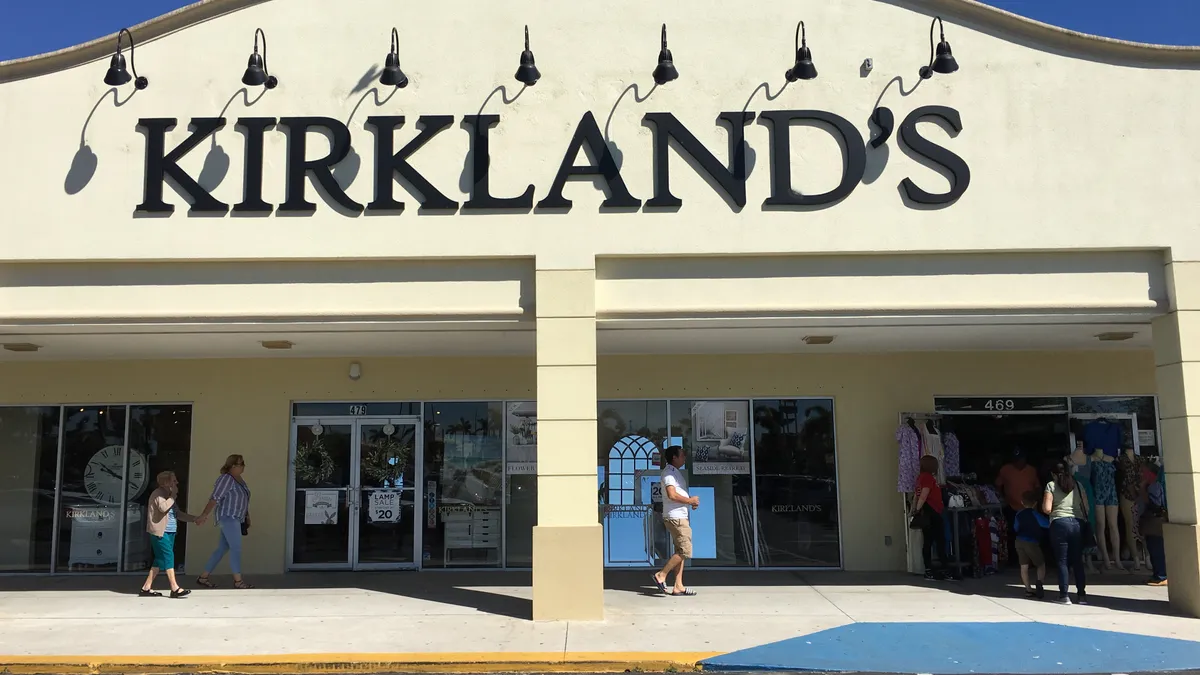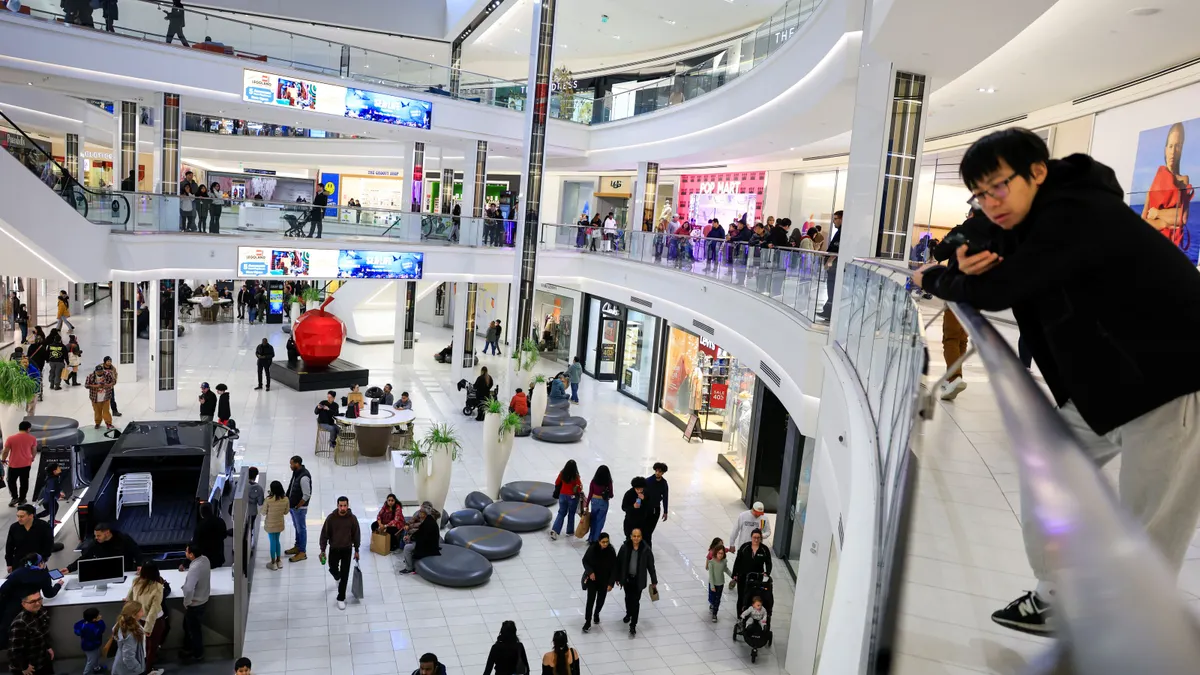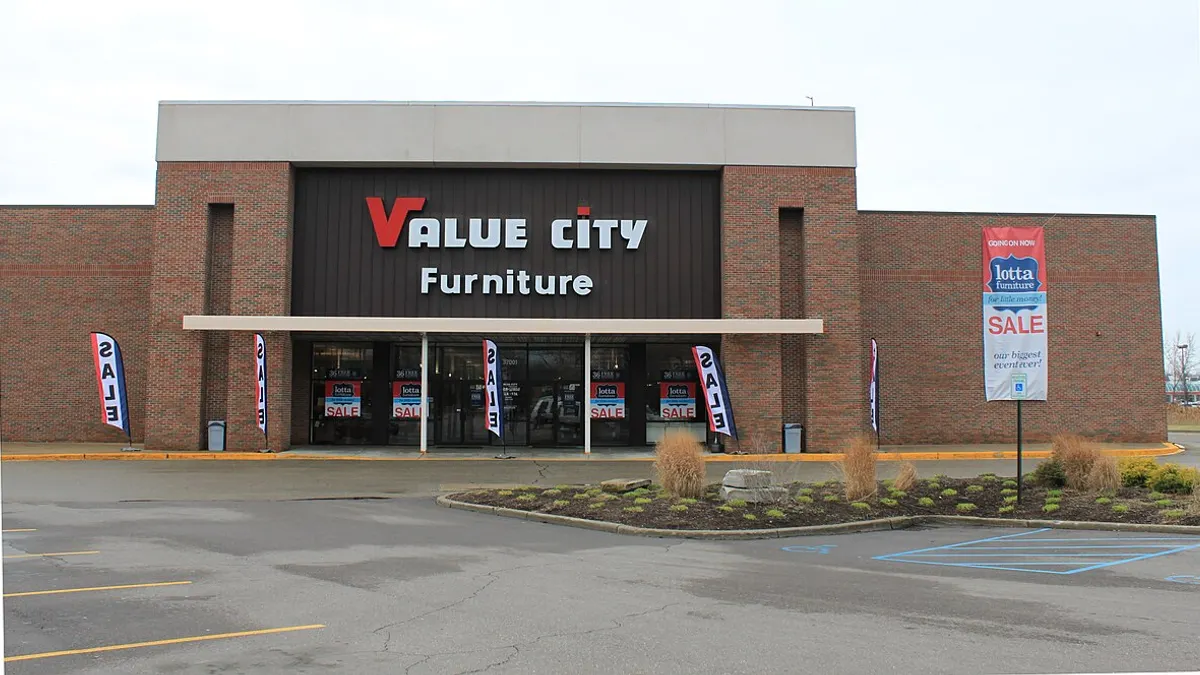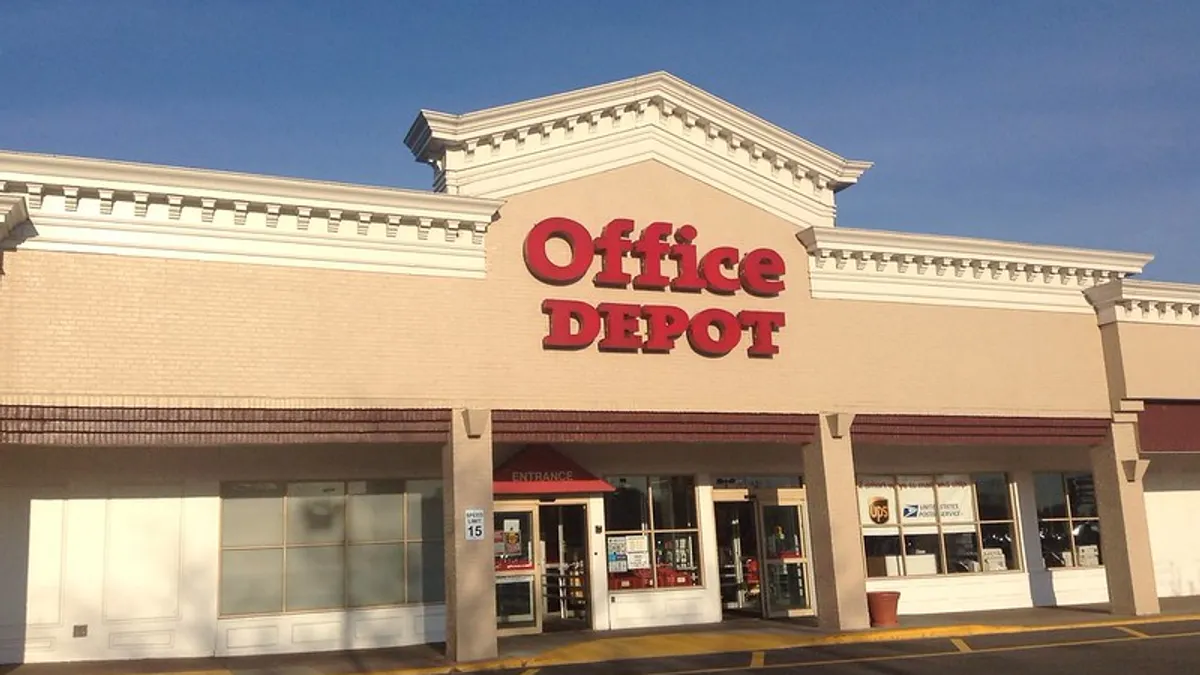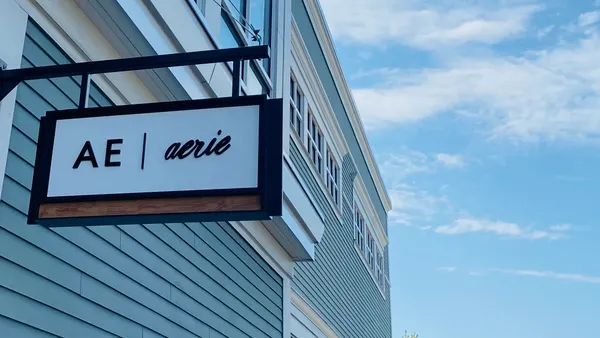When Macy's confirmed the closure of its sprawling Water Tower Place store on Chicago's Magnificent Mile in January, it was merely one out of 125 closures planned a year ago. For many Chicagoans, however, it's the latest sign of the retail giant's questionable stewardship of their beloved Marshall Field's — starting, from the get-go, with the name change.
Macy's is still running the former Marshall Field's flagship on State Street, along with a number of suburban stores in the area. But its departure from Water Tower Place, a Brookfield-run shopping center on Michigan Avenue, will leave a gaping space for the first time since Marshall Field's first anchored it in 1975. It's the latest blow for the shopping district, which recently also lost a three-story Gap flagship and other stores.
As that shows, store closures are hardly unique to Macy's. Still, many Chicagoans harbor deep resentment toward the department store chain, which entered the Midwest relatively late in the game, after a merger, as "Federated," with then-owner May Company in 2005.
Federated/Macy's wasn't the first outside owner of the celebrated Chicago retailer — those previously included a London-based tobacco conglomerate and later the Dayton-Hudson department store company (which ditched that business to focus on its discount Target chain) — but it was the one to do away with the "Marshall Field's" moniker. It was always the plan to rebrand the many local and regional department stores it was taking over, preserving only Bloomingdale's, and Federated itself changed its name to Macy's two years later.
That may have been a mistake.
"Regardless of where one lived, [Marshall Field's and Company] was Chicago's favorite store," Brian Kelly, a Chicago-based retail consultant, said by email. "I've locked horns with one of these fan clubs who ardently argue for a new MF&Co store. I've tried to reason with them, but they won't have it."
What's in a name
The original Chicago dry goods store that was the retailer's antecedent was founded in 1852 and taken over several years later by Marshall Field himself — known for his motto, "Give the lady what she wants." It was Field who built the landmark State Street flagship that holds the colossal Tiffany domed ceiling and famous Walnut Room restaurant.
He also founded several city cultural institutions and organized and funded rescue operations in times of crisis, as after the Iroquois Theater fire in 1903 and the sinking of the Eastland in the Chicago River in 1915, according to Sarah Sullivan, a history professor at McHenry County College outside Chicago. Field invested in Chicago in big and small ways, as a retailer and a benefactor, Sullivan said by phone.
"When Macy's chose to rename Marshall Field's to Macy's, I don't think they really understood what they were giving up," Sullivan said. "I understand economies of scale. Of course, it's much cheaper to advertise on a national level. But 'Marshall Field's' was a name that people cared about. It meant something. Going to Marshall Field's for Christmas, having lunch at the Walnut Room. I have been speaking on Marshall Field's for a couple of years now, and I often get groups of well over 100 people come in, and many of them bring their Marshall Field's shopping bags and boxes and postcards and all sorts of things."
While then-Federated CEO Terry Lundgren told Marshall Field's employees that little would be altered beyond the name, that didn't last, according to former employees who worked there at the time.
"I remember them taking the Marshall Field's sign off the side of the building and putting the Macy's sign up while we were all outside watching, and it was pretty tragic. They kept saying 'We're not changing the store, everything's gonna stay the same, it's not going to change,' that was the mantra," said Becky Petropoulos, who worked there as a personal shopper for years, before and after the transition. "And we were like, okay, well, okay, Macy's is a good name, it's a good brand. We weren't that familiar with it here because they were basically out East. But, little by little, the store did change, and brands left. They started with simple things, like getting rid of the beautiful wooden placards telling everybody where to go, and putting sort of less elegant ones in."
The customer service ethos that was so strong at Marshall Field's was also diluted, although Macy's continues to offer personal shopping and other services in select stores. Like many other department stores in their heyday, Marshall Field's offered the kind of amenities — including dining, personal shopping, private labels, alterations, in-store events, store-based pickup and home delivery — that are now considered cutting-edge ways to succeed in retail. For former employee Julie Blake, the downfall was symbolized by Macy's uniform requirement, which led her to quit.
"My allegiance to Marshall Field's wasn't because I worked there, it was because I was almost raised in the store," Blake said by phone."Probably from the time I was five or six until I was a teenager, every Saturday, my mother, my sister and I would take two buses and an L down to Marshall Field's, put our coats in a locker, get a stroller and spend the entire day in the store. I mean it was such a special place. I didn't want to be part of Macy's because Marshall Field's was all about 'Give the lady what she wants,' the epitome of customer service. And you know, Macy's was just so transactional. It's just a total, total different mindset."
Today is the 8th anniversary of Vanished Chicagoland Facebook Page! Here is a Package Pick-Up sign from Marshall Field's Thank you everyone! pic.twitter.com/e2hlOcjxEw
— Pete Kastanes (@PeteKastanes) May 19, 2020
The real mistake
Macy's ruffled the feathers of many a department store customer in cities across the country when it changed the name of their hometown retailers, including Hecht's in Baltimore and Washington, D.C., Lazarus in Columbus, Ohio, and many others. The centralization went beyond the name changes and destroyed localized merchandising and the personal knowledge that buyers had of their customers, according to Lee Peterson, executive vice president of thought leadership and marketing at WD Partners.
Macy's timing was also off. One obvious obstacle to soon emerge was the Great Recession, which would arrive just a couple of years after the department store set about expanding its footprint and prepping for economies of scale.
By 2005, the department store model was also already breaking down, as seen in Dayton-Hudson's calculation to focus on Target rather than its full-line stores, (renaming itself "Target" in 2000). The many departments that had made those retailers attractive emporiums selling a variety of merchandise were losing share to a rising number of specialty players like electronics stores, beauty retailers, furniture and mattress stores, and home goods stores. Those spaces were then filled with more and more clothing, just as apparel sales growth was ebbing.
Finally, the wealth gap has sent an increasing number of U.S. consumers, even those in the ever-shrinking middle class, hunting for deals at off-price stores, discounters and online. Pressed for time as well as money, more consumers also now prize convenience, and are less apt to spend chunks of time at a department store or the mall.
Merle Tarnoff Simon was once one of Petropoulos's and Blake's best customers at Marshall Field's, depending on them to dress for weddings and other occasions. The personal shopping services at the Macy's in the nearby Hawthorne Center suburban mall, (a store Simon refers to as "the Field's at Hawthorne,") still comes in handy, though mostly to find things for the grandchildren.
Macy's doubled down on American department stores at a terrible time for the segment, so it's difficult to gauge how much of Marshall Field's decline can be placed on its doorstep. As Kelly puts it, "Field's died a slow and ugly death. It was first reorganized and incorporated in 1901. It was first bought in 1982 by [tobacco company] BATUS. This isn't just 'boring retail.'"
Moreover, the consumer has changed, too. Even Simon, Blake and Petropoulos agree that Marshall Field's fate hasn't entirely been a Macy's problem.
"I haven't worn anything besides leggings in a year," Simon said. "There's really no retail anymore. You have TJ Maxx and Marshalls and Nordstrom Rack. You know a lot of my friends won't even go to stores where they're not discounted. The reason it worked well for me is because I don't like to shop, I don't like going through racks, I don't like walking around. I like someone bringing me everything, so it worked fine, and Becky and Julie were really sharp, sharp women. Back in those days you knew who was wealthy by how they were dressed. It's not like that anymore, but I think in a way that's just progress."
For Macy's now, progress means mostly shrinking. Just after the Federated-May merger, the company ran "950 department stores, along with approximately 700 bridal and formalwear stores," according to a 2005 filing with the Securities and Exchange Commission. In 2016, the company said it was closing 100 locations; last year came the announcement of 125 more. Meanwhile, the company in February said it would expand its own off-price effort, Backstage. As of the end of the fourth quarter just ended, the company runs 512 Macy's locations, 53 Bloomingdale's locations and 162 Bluemercury beauty stores. Some observers believe that yet more closures are unavoidable.
"The downfall of Macy's in Chicago was caused by the harmonic convergence of many factors. First and foremost is the dismissal of a favorite local brand (Marshall Field's), closely followed by centralized vs local merchandising and then the rapid acceleration of footfall decline in department stores everywhere, including Chicago," WD's Peterson said by email. "What Chicagoans should understand, though, is that, given those factors, they have had the misfortune of witnessing one by one the demise of those stores, and it was as inevitable as a sunset."



